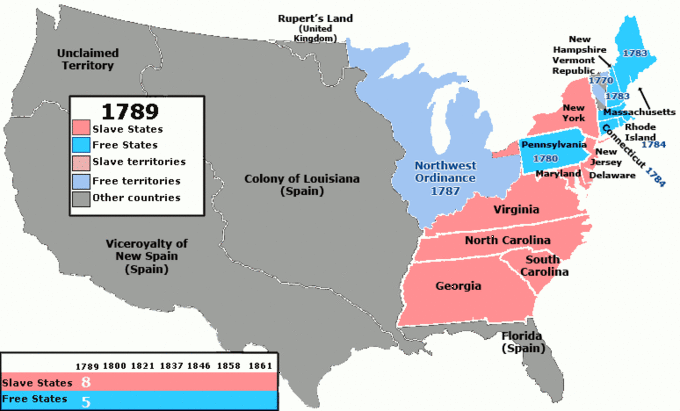Slavery existed in the United States as a legal institution from the early colonial period. From the sixteenth to the nineteenth centuries, an estimated 12 million Africans were shipped as slaves to the Americas. Of these, an estimated 645,000 were brought to what is now the United States. According to the 1860 U.S. Census, the slave population in the United States had grown to four million.
Race was a critical element of chattel slavery. Slaves were of African descent and children of slaves became slaves themselves. Freedom was only possible via granting of manumission by a slave’s owner, a practice that was frequently regulated and sometimes prohibited by law, or by the slave running away, which was both dangerous and illegal.
The treatment of slaves in the United States varied depending on conditions, time, and place, but was generally characterized by brutality, degradation, and inhumanity. Slaves were denied basic education, and in some cases, prohibited from convening for religious gatherings, in order to prevent potential escape or rebellion. Punishment was meted out in response to perceived disobedience or infractions, but also as a means for a master or overseer to assert dominance. Slaves were punished by being whipped, shackled, hanged, beaten, burned, mutilated, branded, and imprisoned. Slave women were at high risk for rape and sexual abuse, a practice partially rooted in the patriarchal Southern culture of the era that perceived all women, black or white, as property or chattel. Many slaves fought back and some died resisting this sort of treatment, though some managed to escape to non-slave states and Canada, aided by the Underground Railroad.
"Slaves for Sale: A Scene in New Orleans"
This image depicts slaves for sale.
While some slaves worked in urban areas as domestic servants, most labored on plantations or large farms where their owners took advantage of good quality soil and a temperate climate to mass produce cash crops such as rice, tobacco, sugar, indigo, and cotton. In small operations, slaves worked side by side with their owners; on large plantations, they were directed by white paid overseers.
The labor-intensive agricultural economies of the South during the eighteenth and nineteenth centuries were dependent upon the continued institution of slavery. Because Northern industries depended upon the crops produced in the South, it seemed to many that the nation's prosperity was also tied to the institution. The invention of the cotton gin in the late eighteenth century had revitalized cotton production in the South and Southwest, further increasing demand for slaves. Slaveholders of the South exercised strong influence over U.S. politics, and many presidents were slaveholders. However, by 1804, all states north of the Mason-Dixon Line had either abolished slavery outright or passed laws for the gradual abolition of slavery based upon abolition movements that viewed the practice of slavery as unethical, antithetical to the core principles of the United States, and detrimental to the rights of all free persons. Accordingly, the nation was polarized along the Mason-Dixon Line.

Slave States and Free States
Animation showing which areas of the United States did and did not allow slavery between 1789 and Lincoln's inauguration in 1861.
By the 1850s, the South was vigorously defending slavery and its continued expansion into new U.S. territories. Compromises were attempted and failed, and in 1861, 11 slave states broke away to form the Confederate States of America, leading to the American Civil War.
In 1862, the federal government made abolition of slavery a war goal. In 1863, President Abraham Lincoln freed slaves in the rebellious Southern states via the Emancipation Proclamation. By December 1865, the Thirteenth Amendment took effect, permanently abolishing slavery throughout the entire United States with no compensation for the former slaves’ owners. The areas affected included border states such as Kentucky, which was home to approximately 50,000 slaves at the time, as well as Native American tribal territories.